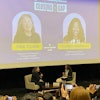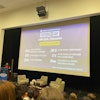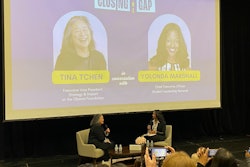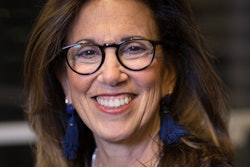In February, as we celebrated “International Day of Women and Girls in Science” and “Introduce a Girl to Engineering Day”, I reflected on what is it to be a woman in Science, Technology, Engineering, and Math (STEM), and what we could do to help create more inclusive environments.
 Sylmarie Dávila-Montero
Sylmarie Dávila-MonteroNow, as we celebrate Women’s History Month, I intend to share some of those thoughts with you.
It is no secret that women remain underrepresented in STEM fields. Based on data from the National Center for Education Statistics, for the last 15 years, women have consistently earned more than half of the degrees conferred by postsecondary institutions. However, in STEM fields, women tend to earn a third of the total awarded degrees and the numbers drop even more when it comes to Black, Hispanic, and American Indians or Alaska Natives women.
Nevertheless, it is also known that women have made some of the greatest contributions to events in history and to the advancements of STEM fields. Some of my favorite women in history include Katherine Johnson for her contributions to America’s aeronautics and space programs; Grace Hopper for her contributions in programing language development; and Edith Clarke for paving the way for other women in STEM and in engineering in the U.S. by becoming the first woman to be professionally employed as an electrical engineer.
Still, we remain underrepresented.
As may have happened to other women in engineering fields, my first encounter with this reality was during a Circuits Systems class, one of my first engineering classes in college. I was 1 of 4 women in a class of 25 students. With the passing of the years, as I submerged myself into the engineering and higher education world, I noticed a reduction of women in my field. I noticed it while I was working toward my undergraduate degree, and I still notice it now in graduate school. It seems as I advance in my career, there are fewer and fewer women around me.
So, what is it like to be a woman in STEM?
That has always been such a difficult question to answer because every woman’s experience is particularly unique. For me personally, to be a woman in STEM has been an interesting journey.
Yes, I have been the only woman in the room. And yes, I have felt the need to prove myself in order to be heard. Despite the challenges, there have been gratifying opportunities including the ability to push for a more inclusive and diverse world. Being a woman in STEM has let me see and understand the struggles of other women, be empathetic to them, and look for ways to change what needs to change.
It has been on this journey that has made me wonder how well we are retaining women once they have entered STEM programs. Studies have shown that women leave STEM careers at disproportionally higher rates than men, creating a retention problem that is often known to be part of the “leaks” in the STEM pipeline. Women leave for a variety of reasons ranging from work-life balance to bias experiences.
Initiatives such as “International Day of Women and Girls in Science” and :Introduce a Girl to Engineering Day” are full of amazing activities, adopted by postsecondary education entities, to attract and recruit girls into STEM fields. They inspire girls to be scientists and engineers, while they also help develop a sense of STEM identity in those young girls. However, the recruitment of women into STEM fields will only be truly successful if women stay in them.
Even when millions of dollars have gone to recruitment and retention initiatives, I truly believe that there are three things that we can all do to contribute to the retention of women in STEM fields by creating more welcoming and inclusive environments.
Be an honest and supportive mentor.
I have been blessed with amazing mentors, both men and women. They have been honest with me about their own biases and the possible challenges that I may face as a woman in STEM, including balancing my career with a desire to have a family.
Educate yourself and educate others.
Many universities have incorporated Diversity, Equity, and Inclusion trainings that serve as a great tool to understand, not just others, but also our own misconceptions and biases. Even as a woman in STEM, I have needed to work on some of my own biases about women in STEM. Acknowledging this is the first step to have conversations and creating more welcoming environments.
Be a storyteller of women’s successful stories in the field.
Even if you are a woman in STEM, my experiences may not compare to yours, but you may know someone’s story that does. Representation matters, not just in a categorical way (women representation), but also at the intersections of our identities (e.g., being women, Hispanic, and Latina). There is power in telling our stories and connecting with one another through them.
As we celebrate Women’s History Month, let us all reflect on our role to support one another and recognize the work of those women around us.
Sylmarie Dávila-Montero is a Ph.D. candidate in the Electrical and Computer Engineering doctoral program at Michigan State University. She is also an active participant in initiatives that promotes the participation of minorities, especially women, in STEM fields. You can follow her on Twitter @Eiramlysal.”





















